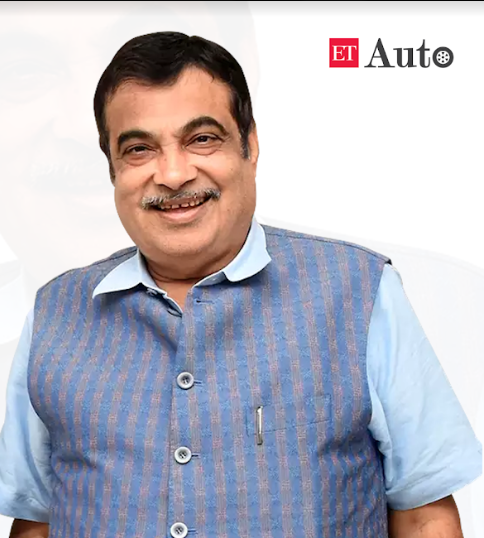
Q: What is your vision of the USD 5-trillion economy and what would be the role of infrastructure?
Automobile industry is the growth engine for our development. Presently, the size of the industry is INR 7.5 lakh crore, out of which INR 3 lakh crore is exported. This industry is giving maximum GST to the state and central governments. This industry has created over4 crore jobs and we intend to make this industry worth INR 15 lakh crore.
Now, with the scrapping policy, we can reduce the cost of components by 30% because the recycling of aluminium, copper, rubber, plastic, and any main material is going to reduce the cost. So, it’s a win-win situation for all.
And I’m confident that within five years we’ll be number one in manufacturing, because we are doing a good job on alternative fuels also as the future of the global automobile industry is related with the Indian automobile mobile industry.
Q: You also said that you’re going to reduce fossil fuel consumption. Have you set a timeline?
I don’t believe in setting any timelines. The reason people prefer electric vehicles is because it is cost effective, pollution- free and indigenous. But the problem is one litre of petrol equals 10 rupees of electricity. The cost of electric vehicles compared with diesel and petrol is high. The transition from petrol/diesel vehicles to electric vehicles will take some time.
Q: The industry is working on EVs, Flex engines and a lot of other technologies. According to you, what should be the technological roadmap for India? And what are the preparations for BS-VII?
We are currently in the process of making CNG and LNG from the crop stubble. I believe that the issue of running buses and tractors in Punjab and Haryana can be solved as there is a lot of stubble readily available there. In UP, Maharashtra, Karnataka, Tamil Nadu, an ethanol based economy can be developed. So whatever is available in the region, it can be used. We are trying at all levels to reduce the dependency on fossil fuels and we will move to carbon neutrality by 2070.
In the power sector, 38% generation is through solar power, and we will reach 60% soon. There is also a lot of research and development going on in hydro power, nuclear power and geothermal power.
Today we are energy importers, we are atma nirbhar and I believe we will soon be energy exporters. We have started working on green hydrogen. We will soon be hydrogen and ammonia exporters.
Q: Will there be any incentive for companies for using these technologies and new fuels?
It is already cost effective, in comparison with petrol and diesel. We only kept 5% GST on electric cars but for petrol cars, the GST is 48%. The government already has kept a lot of incentives for less pollution emitters. The Finance Minister will take further decisions on this.
Q: Any proposal from your side?
I will be requesting the finance ministry to incentivize the EVs and flex engines and to impose more taxes on the fuel guzzlers. I will request the FM to think about this.
Q: Vehicle safety is something you have been talking about and steps have been taken in that direction. There is a global NCAP which gives a vehicle safety rating. Will India have a similar level of rating system?
We are proposing a star rating system which will improve the quality of vehicles. Carmakers like Mahindra and Tata are already putting six airbags. Star rating is coming and from a road safety point of view, whatever necessary change needs to be done in automobile engineering, we will do it.
Q: What are the initiatives being taken for road safety by the policy makers?
In the aspect of road safety, we would do everything possible to improve automobile engineering, reduce pollution and save lives. It is a constant endeavour to reduce pollution and save lives. Fossil fuel contributes 40% to our pollution and if we are able to reduce it, it would be beneficial to the country.
Q: More often than not it is the faulty road design that is the culprit for road accidents as opposed to the lack of airbags in the cars, what is MoRTH doing to fix that aspect?
Yes, I agree there are shortcomings in road engineering. So far, we have been able to fix black spots worth INR 40,000 crore. The previous governments followed the strategy of building flyovers at the existing roads to make them viable, which led to faulty road designs. We plan to fix these for the future roads. For the existing roads we are planning to fix the black spots and we should be able to reduce them significantly in the next 3-4 years.
Q: Is there any specific target that has been set for NHAI for this purpose?
Our constant effort is to save lives and work towards road safety rather than adding new roads and bridges.
Q: You said the industry should gear up for BS-VII?
We faced a lot of challenges to get to BS-VI but we have done it successfully, the auto industry also supported us. We need to march towards BS-VII with the rest of the world and we are in talks with the auto industry for the implementation.
Q: Is there any timeline for the same?
I don’t believe in setting timelines, we will consult with the automobile industry and then move forward.
Q: The ministry of road transport and highways has been unable to meet the road construction target in the last few years and one of the reasons is delayed monsoon and changed weather patterns. Has that been factored in while deciding the target for this financial year?
There were problems due to Covid in the past few years and now even climate change has added to the woes, but there are some people who convert problems into opportunities and some people convert opportunities into problems. We should keep doing our work and not look for excuses for not meeting the targets.
Q: What is the status of the subsequent rounds of InvIT by NHAI?
There were taxation issues related to the InvITs, which have been resolved now. Will discuss this matter further with the NHAI Chairman.
Q: NITI Aayog has asked for the evaluation of NHAI on the back of its increasing debt? Are you ready for NHAI’s evaluation?
Yes, absolutely. NHAI is a goldmine and its toll income is progressively increasing and we will continue to get returns for the next 12-15 years. So based on the asset monetization plan of NHAI, I have asked them to prepare a report and we will soon make it public. NHAI is preparing this report and we should soon be able to finalise it.
Our budget is INR 2.7 lakh crore and we would include the share of monetization also. Now, we have also opened up our InvIT offerings for the retail investors. Our recent InvIT offering was subscribed over seven times and going forward our InvIT offerings will give handsome returns to the investors.
Q: How have the new highways added to the efficiency of movement in the country?
We have managed to significantly reduce travel time between two cities with the execution of these expressways. We would also be able to reduce our logistics cost, which is the highest in the world (16%). We plan to bring it down to single digit (9%) in the next five years.
Q: Are you in discussions with companies for building electric charging infrastructure on the new expressways?
We are building 670 road amenities and we will have electric charging infrastructure on all of them. We are also thinking of an electric highway on the Delhi-Jaipur route where the buses and trucks would run on cable.

















